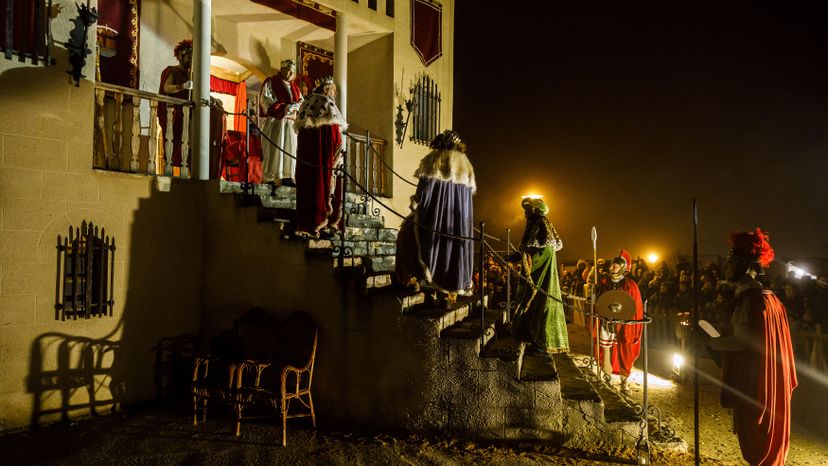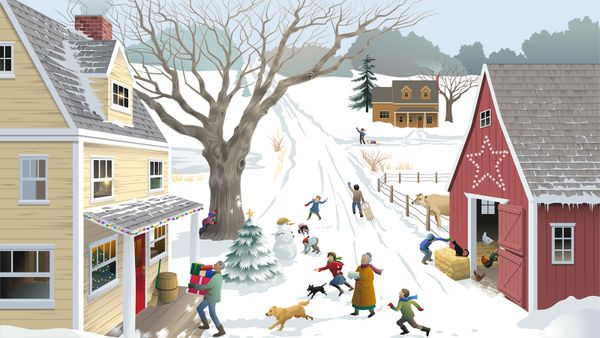Christmas Traditions in Spain

The Christmas season begins in Spain on December 8, with a weeklong observance of the Feast of the Immaculate Conception. Spanish families may travel to Seville, in the southwest, where the warm weather encourages flowers to bloom in December. In Seville's great cathedral, they watch ten costumed boys perform an ancient dance called Los Seises to honor the Virgin Mary, the patron saint of Spain. In northern Spain, families decorate their balconies with colorful carpets, flags, and flowers. They burn candles all night in the windows.
Evergreens decorate the churches and outdoor markets throughout the Christmas season. Tambourines, gourd rattles, castanets, and miniature guitars are offered for sale to enliven the singing and dancing in the streets. Children go from house to house reciting verses or singing carols for sweets, toys, or small instruments.
Advertisement
Life-size nativity scenes called nacimientos are set up in public places, and every family has a small nacimiento in the best room in the house. In some villages, families send their sons to bring in a Yule log. As the boys tug the log home, they stop at homes along the way for chocolates and nuts.
Christmas Eve is La Noche Buena, the Blessed Night. When the first star shines in the evening sky, people light bonfires, called luminarias, in public squares and outside church walls. Traditional plays called Las Pastores depict the shepherds' adoration of the Christ Child in Bethlehem.
At home, each family places a burning candle above the door and lights candles around the nacimiento. People fast all day and then go as a family to midnight mass. Then they return home to enjoy a feast of almond soup, roasted meat, baked red cabbage, and sweet potato or pumpkin.
Christmas Day is set aside for family reunions, when relatives get together for more feasting. The children sing and dance around the nacimiento. Family members exchange gifts, and friends and neighbors exchange holiday sweets. Some families add to the fun with the traditional Urn of Fate. Names are written on cards and placed in a bowl. Then two names are drawn at a time. Those two people will be friendly to each other throughout the coming year.
Children believe that on Epiphany Eve, January 5, the Three Kings travel through Spain on their way to Bethlehem. That night children set out their shoes filled with straw for the Three Kings' camels. The Kings, passing in the night, fill the shoes with gifts. The next day, families enjoy a feast of almond soup, turkey, and roasted chestnuts. Sweets include a special nougat candy called turron and Kings' cake. A small prize baked in the cake brings luck to the person who finds it.
In some villages on Epiphany, January 6, children march out to the city gates carrying special cakes for the Three Kings and other foods for their servants and camels. They are hoping to meet the Three Kings on their way to the Holy Land. Always disappointed in their hopes, the children eat the good things they have brought with them. Then they are directed by their parents to the nacimiento in the village church. There they find the Three Kings presenting gifts to the Christ Child in a manger.
The Christmas season ends at Epiphany with the "Cavalcade of the Kings," a wonderful parade of the Three Kings and live animals.

